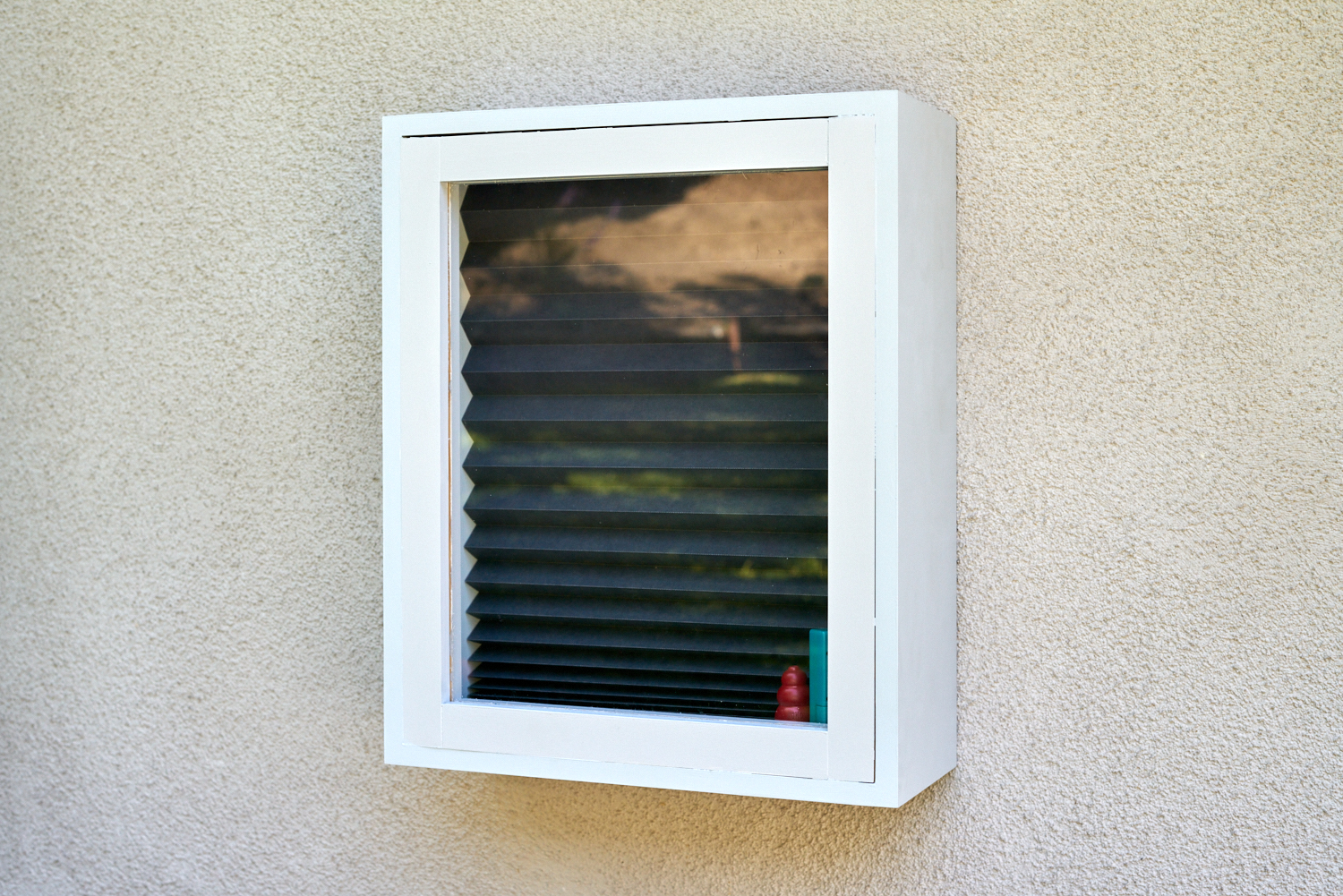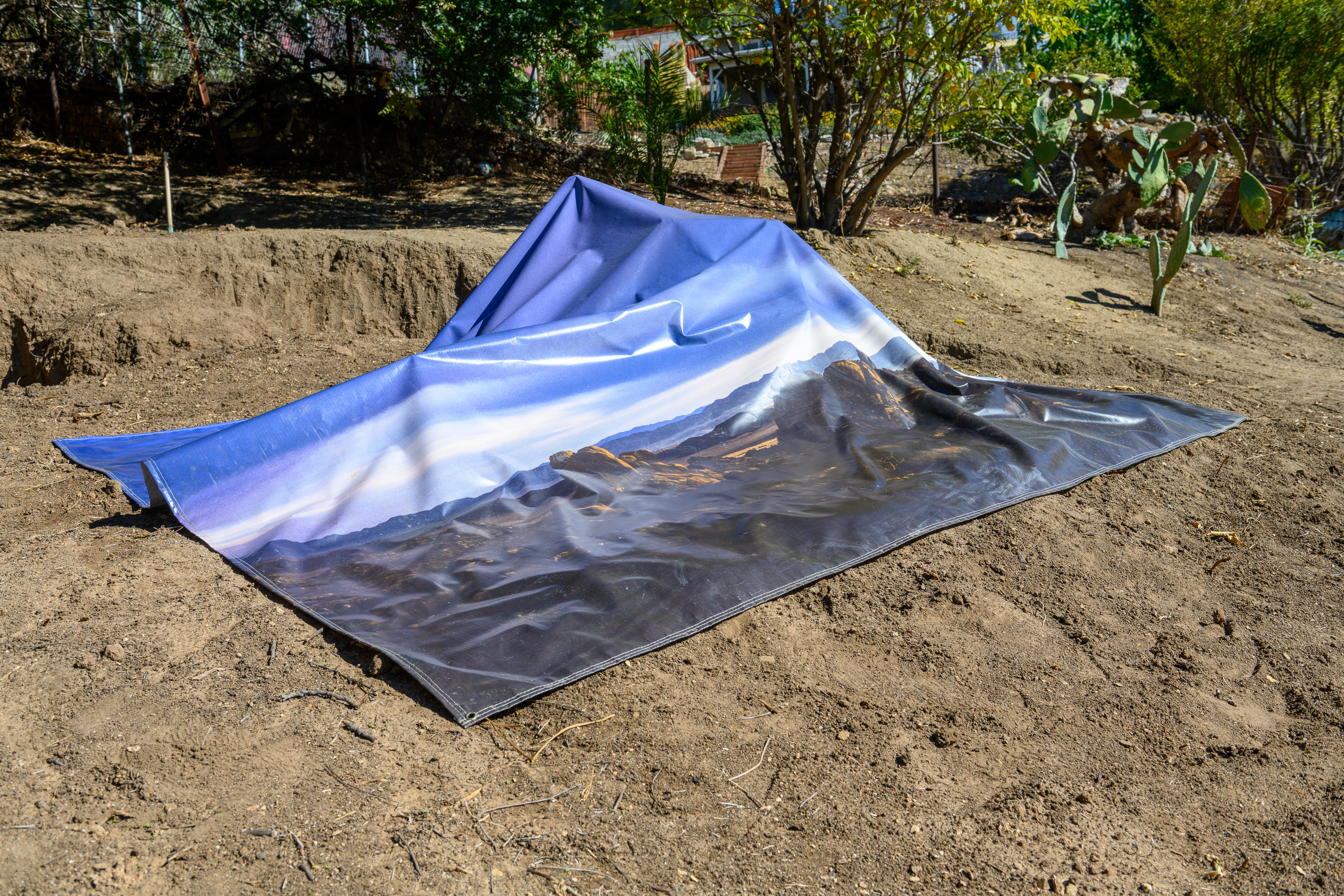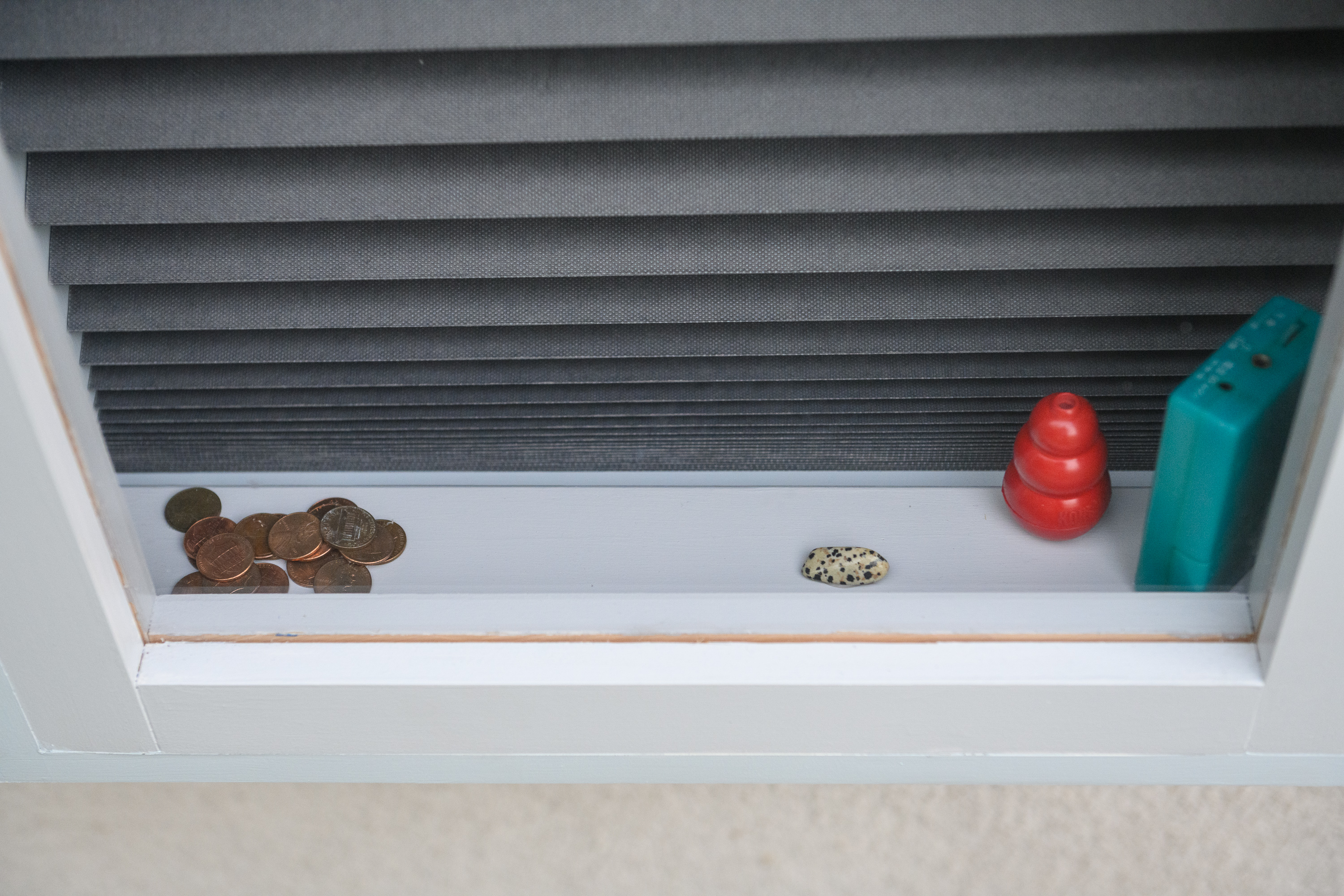Chapter 6—Steve Kado, Hey, I'm Outside , September 18, 2021–November 7, 2021
In 2015 I attended a lecture-performance by Steve Kado called October, Jr at the REDCAT in Los Angeles. Later I could recall some things: that he moved through a series of digressions touching on sundry topics in the fields of art, philosophy, and science; that accompanying this motley address was a 3/4-scale model of volume 12 of the journal October; that he played a clip from Carl Sagan’s 1980 PBS series, Cosmos; and that the talk was delivered in a casual and animated style, marked by many droll asides and a few moments of wonder, which was very much like the experience of talking to Steve minus the duties of the interlocutor. I’ve gotten my hands on a recording of that lecture, and I follow Steve again down the crooked path. Through the parting fog I take in not just the detours—Invasion of the Body Snatchers, the hybrid drivetrain of the Toyota Prius—but the shape and direction of it all. Steve is sketching out—this I had totally forgotten—something like a theory of models, the possibilities and contradictions of modeling reality. But I’m especially struck by this thing that happens about twenty minutes in: differentiating model from replica and decoy, Steve alights on the example of a model train enthusiast, with whom, we’re told, he can’t really identify because, he says, “I have no hobbies.”
To anyone who knows Steve—I knew him then and know much more of him now—this is an astonishing claim. At a glance, Steve appears to be a person with an abundance of hobbies. He runs a sci-fi book club, has hosted a weekly radio show for a decade, throws the occasional baroque music club night, is an avid cyclist and at least used to be a regular squash player. He takes a lot of pictures of Nisan Previas, describing this, on a devoted Instagram account, not as a hobby but a “weird enthusiasm.” Over on Twitter, he created an account to document awkward puns made by Amy Goodman on Democracy Now, or did this one never get off the ground? In the time I’ve known him, he has taken up, at various points, Korean, Spanish, alto flute, alto clarinet, and computer programming, to which we could add dalliances in any number of subject areas—Byzantine history, Mesoamerican codices, etc. I lay this out not to impugn a minor detail in one of Steve’s talks, but because the figure of the hobbyist, the amateur (as in someone who’s in it for love) vis-à-vis the professionalized artist offers an interesting way of thinking about how Steve approaches his art, how his polymathic appetites for knowing and doing gnaw the lines between vocation and avocation.
So, sure, a few of the items in the above inventory could be reasonably characterized as something more than hobbies, as in fact relating to—or forming a part of—what we might call (if it weren’t such an ugly and inapt term here) his practice. The instruments, for example: Steve is a musician and has of late played his woodwinds in public settings, most recently during an exhibition staged in my backyard. Presented as a kind of novice experiment, however, these performances eschew the baggage and formal constraints of, say, being in a band or composing for an ensemble (both of which he’s also done). His radio program, The Talking Show (co-hosted with Nicolas G. Miller on KCHUNG), bears a family resemblance to his lectures (both are the progeny of David Antin’s improvisational talking pieces). Each week a guest comes on and monologues for an hour under the stony gaze of the hosts. This is not to say that the many tributaries feed some coherent whole, that when glimpsed just so you can see how it all fits neatly together. Part and parcel of that wandering eye, the rejection of specialization and expertise, is things not fitting together.
For his show at Hakuna Matata (that, for some reason, is the gallery in my backyard), he stuck on the back of the house a sculpture of a window: MDF frame painted white, plexi pane, gray accordion shades lowered all the way. Arrayed on the windowsill are a turquoise Buddha Machine, a red Kong, a polished mottled stone, and a pile of pennies. Many visitors at the opening had to be directed to the piece: there was a crowd, and the Steve’s window kind of blended into the wall where it was mounted, which has two actual windows. But once found, it did not trick the eye. It’s a lighter shade than the wall and looks handmade, and the plexi is way more reflective than glass. The real windows are flush; Steve’s juts out. It is functionally a box and in its dimensions it recalls the famous boxes of Joseph Cornell, evacuated of all the wonder and whimsy. There is that old chestnut, going back at least to Alberti, the window as a metaphor for painting, framing the world. But, of course, we were on the wrong side for all that, as the title, Hey, I’m Outside, makes clear, trained to distrust humanist subjectivity. More than sticking it to the illusionism of Renaissance perspective or the sublime absorption of Friedrichs’s wife watching the ships rolling on the river (as maybe Magritte’s windows do), the drawn shades focus our attention on the little sill and the staging of miscellaneous stuff. Unlike Steinbach’s slick choreography of consumer commodities (he has also used Kongs), Steve’s display has a certain realism about it. You could plausibly find this random assortment in someone’s window. A pet-owning (Kong) meditator (Buddha Machine), I guess. But as we’ve seen, verisimilitude is not really the goal here; the window draws attention to its not-windowness and, as with many of Steve’s sculptures, assumes an ironic posture. In their miniature theater, the display of items— from the specificity of the Kong (a pet toy with an exquisitely cute snowman-like form) to the generality of the pennies (a negligible sampling of what Marx called “the universal equivalent”)—appear alternately pathetic, fascinating, or just like a bunch of stuff. It may not be possible to tell a coherent story about the collection on the sill, but Hey, I’m Outside seems to insist that meaning is made through happenstance and obscured views. Art is a failed model of the world, though as Steve said at REDCAT, that’s not unique to art—all such models are bound to fail. His model window, with the shades drawn, is not a disavowal of signification but an insistence on its overabundance. You stand in front of it, and ideas glance off the plexi.
The best way to experience this is with Steve there to tell you how the idea for the window came to him as he was walking by a row of houses in San Francisco that looked out onto a beautiful park and how, despite the premium the owners had paid for their view, they all had their shades drawn (each in turn staging a little tableau of stuff on the windowsill), precisely because people are always walking by. Likewise, the preferred way to view the other work Steve showed at Hakuna Matata, a tarp printed with a landscape photograph he took of BLM land out by Joshua Tree (part of an ongoing series), hiding a pile of detritus collected from the backyard, is with Steve on hand. There is a futility in making such a picture when you could just buy the postcard. The sublime so easily slides into the banal. Blowing it up and printing it on a tarp makes a satirical use out of this conundrum of beauty and taste, while using it to cover some unsightly objects ironizes Huebler’s old adage: “The world is full of objects, more or less interesting; I do not wish to add any more. I prefer, simply, to state the existence of things in terms of time and/or place.” A picture that shouldn’t be is hiding some objects whose existence we should be affirming. But only Steve can really tell you how the tarps came about from a process of working through the shame of taking photographs, which he’d given up as unjustifiable and come back to as a simple pleasure, or maybe a weird enthusiasm.
There is a strong autobiographical current throughout Steve’s work. Volume 12 of October, the one he made a model of, he explained to the audience at REDCAT, was the current number when he was born and so is a kind of critical theory birthstone. Among numerous personal anecdotes and flashes of psyche, he told us how he stumbled into making art through reading October in college, recalled the times and places he’d given this lecture in the past, and, while discussing Sagan’s explanation in Cosmos of the series of accidents that gave rise to life on earth, mused on the possibility of another Steve on a planet somewhere giving this very lecture. More than anything, October, Jr. is an account of thinking the substance of October, Jr. It is, to borrow the subtitle of Cosmos, a personal odyssey, addressed with a mock-authoritative tone—the authority of the non-expert. In this we see how to square the deadpan of the sculpture with the exuberance of the lecture: an insistence on a self amid profusions of ideas and things. (The title of the show I’m writing this for is Me!)**


